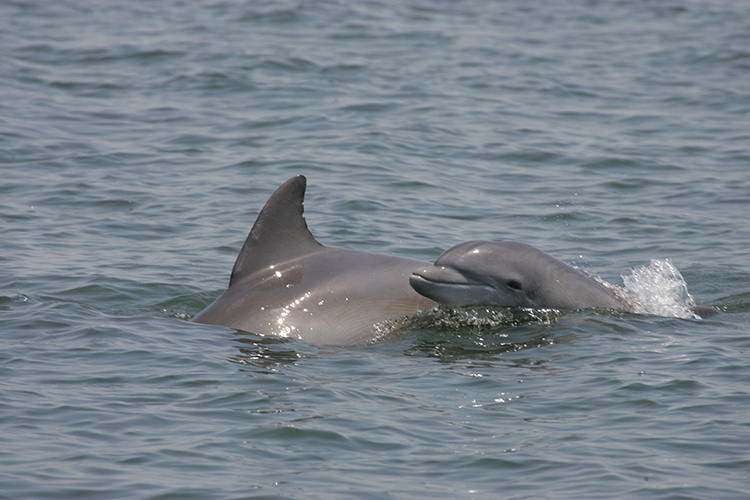
Despite a recent slew of bad news about the health of the Indian River Lagoon – which was given a grade of F+ in the latest assessment by the Marine Resources Council – there is a splash of good news.
A new study by Hubbs SeaWorld Research Institute scientist Wendy Nokes Durden and her colleagues found the bottlenose dolphin population in the lagoon has remained stable over the past decade at just over 1,000.
Durden and other scientists followed the marine mammals around the 156-mile-long estuary in a dozen boats for about 10 months, shooting 150,000 photographs and identifying individual animals by notches on their dorsal fins.
The resulting study, co-authored by researchers from the Harbor Branch Oceanographic Institute, University of Central Florida, and the Georgia Aquarium’s St. Augustine field station, was published in the scientific journal PLOS 1.
The findings clarified previous population estimates performed using aerial surveys because the photo-ID method was able to separate resident “lagoon” dolphins from transients.
That kind of demographic information is vital to resource managers from NOAA Fisheries, the federal agency in charge of protecting the animals from manmade threats such as pollution and run-ins with fishing gear.
“I view these results optimistically,” Durden said. “We are cautiously optimistic it documents that the population does remain stable. We’re grateful dolphins aren’t going how manatees are going right now.”
Durden was referring to an unusually large number of manatee deaths in Florida so far this year – most blamed by experts on starvation stemming from the widespread loss of seagrass in the lagoon.
The dolphin research was conducted following several “unusual mortality events” of dolphins in the lagoon that occurred in 2001, 2008, and 2013-15. In 2013, at least 77 dolphins died – about 8 percent of the population, which was then estimated at 1,032.
Earlier, in 2011, Harbor Branch researchers estimated the population in the same range, “about 1,000.”
In subsequent years, the lagoon was plagued by repeated algae blooms that killed seagrass meadows, considered the most important habitat for a variety of creatures living in the estuary, including fish that dolphins dine on. Other studies have revealed high concentrations of the heavy metal mercury in lagoon dolphins, as well as skin diseases and tumors.
But the dolphins seem to have persevered through all of it, with the number of animals unchanged at 1,032, according to this most recent study.
“Identifying unique individuals, unlike prior estimates, meant that we could estimate abundance for the resident population without including individuals that were just passing through the system,” said Eric Stolen from the University of Central Florida.
Durden says the findings will help NOAA Fisheries managers determine whether dolphin mortality is going up or down and what to do about it.
“One of the things they are able to manage are fishery takes,” she said. “When they evaluate mortality, they have to know what the take is. They need that number to impose stricter fishing regulations if needed in order to protect the dolphin population.”



